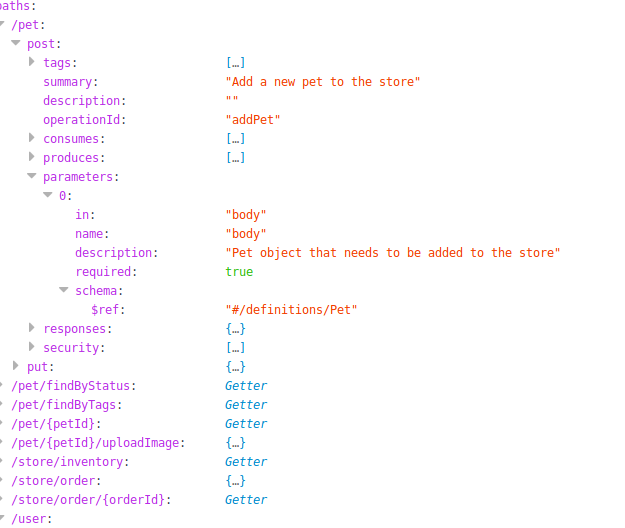SlimSwaggerDispatcher - DISCONTINUED
Maybe it's about automation, or just about beign more declarative because a DSL non Touring complete language will just more correct, anyway I find it just amazing the possibility to describe an API by using the Open-API-Specification and let this specification be your code: this class will set every route using the Slim functionalities, and for every route point to a CommandHandler., (*1)
I'd suggest, the best way to see it in action is just to clone the repository and try the Example Hello World Application:, (*2)
git clone git@github.com:virgiliolino/SwaggerSlimDispatcher.git
cd SwaggerSlimDispatcher/Examples/HelloWorld/
composer install #composer install will actually install Slim and SwaggerSlimDispatcher
php -S localhost:8080 -t public public/index.php #start the server
curl localhost:8080/hello/world # or just open the browser localhost:8080/hello/world
For a fully working application, you could take a look at a ReactJS + Slim Skeleton that provides all the functionalities needed for a modern application.
The url is here
The OpenApi specification is here, (*3)
You will not have a few overpopulated Controllers, but instead for every entry point a command handler.
You can read at this blog post for some ideas of how we intend our architecutre, (*4)
Furthermore, the Api specification from Swagger can be automatically validated, tested
 , (*5)
, (*5)
In the end you'll have a yml or json file that describe your API, something like this:
 , (*6)
, (*6)
By using our library all routes will automatically be set. Every route pointing to a CommandHandler indicated by a unique operationId.
So in the image of the example, you can see that there is a route:
/pet that accept post requests. It will be enough to use our class, when you start the application the route /pet will accept a post.
And so for the gets that you see below, like /pet/findByStatus, etc.
For every path, it will be executed the command handler with the operationI.
In the example for /pet, you can see the operationId: addPet. So making a post request to /pet, the system will try to execute the class AddPet::execute passing the params. The operationId must be a fully qualified name of a class. Something like this for example:
operationId: \MyApplication\CommandHandlers\AddPett
which means that will execue AddPett::execute, (*7)
You may find an example of a fully working Open-Api specification here the full json file, (*8)
Installation
Even if its working, I'd not consider it really a stable package. So to install it you need to proceed in that way:, (*9)
composer require dispatcher/swagger-dispatcher dev-master
Examples/Helloworld
$app = new \Slim\App;
$container = $app->getContainer();
$container['HelloWorld'] = function ($c) {
return new \HelloWorld\CommandHandlers\HelloWorld();
};
$swaggerApiFile = 'routes.json';
$commandHandler = new Dispatcher\Swagger\DefaultCommandRegisterer();
$swaggerConfigParser = Dispatcher\Swagger\ParserFactory::parserFor($swaggerFile);
$swaggerConfig = $swaggerConfigParser->parse($swaggerFile);
\Dispatcher\Swagger\SwaggerDispatcher::InjectRoutesFromConfig($app, $swaggerConfig);
As you may see we're injecting HelloWorld, a command Handler with the same id of operationId that you may find on routes.json, (*10)
That's all folks., (*11)
Help wanted
There is no validation at all. This process can be automatized. Class CommandHandler on the file called SwaggerDispatcher., (*12)
Thanks,
Virgilio, (*13)
 Wallogit.com
Wallogit.com
 , (*5)
, (*5) , (*6)
, (*6)